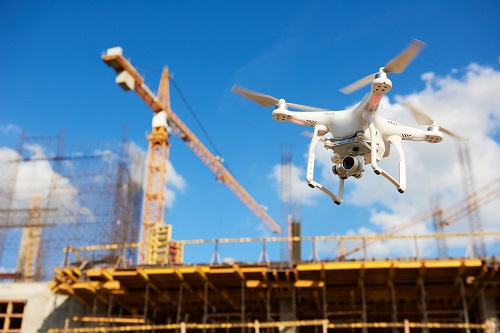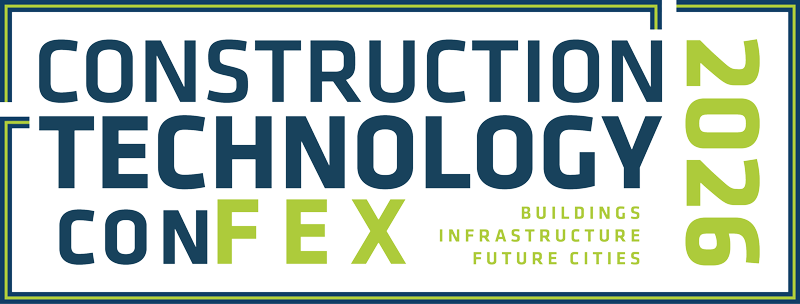June 1, 2023
Drones Revolutionize Site Inspections with Safety, and Accuracy - Construction Technology Event
Finding new methods to evaluate and maintain our infrastructure is more crucial than ever as it becomes older. However, Unmanned aerial vehicles (UAVs), sometimes known as drones, are a technology that has gained popularity recently in the construction industry.
But wait for a second, what is the connection of drones with the construction industry? We know you might think the same.
So in order to solve your query let us tell you that these flying gadgets are proven to be a useful tool for infrastructure inspections despite their capacity to collect high-resolution photographs and data from inaccessible locations. However, the use of drones in construction sites has assisted in the early detection of possible faults at the places like- electricity lines, dams, bridges, and other structures before they become serious concerns.
As also recommended by the construction technology festival, building inspection with drones is becoming a more common approach for performing infrastructure inspections since it allows for more efficient and complete examinations of buildings and other structures.

But the main query we all have is how drones are revolutionizing construction site inspections.
Therefore in this blog, we have discussed this and also we have shared what we think the future holds for drones in this field.
First, let’s understand what drones are actually.
What are Drones?
Drones have modern sensors and cameras that can record high-resolution photos and videos of the building site, allowing engineers to conduct extensive analyses and follow project progress. Moreover, according to construction networking events, the construction sector had the greatest growth rate for drone use of any business, at an astounding 239%. Drones have increased construction workers' safety by 55%, according to research. They are Unmanned Aerial Vehicles (UAVs) nonetheless, and they are mainly employed for,
- Videography
- Aerial Photography
- Surveillance
- Data Gathering
How Drones are Revolutionizing Construction Site Inspections?
Drones have revolutionized construction site inspections by providing a cost-effective and efficient alternative to traditional methods. However, as a big topic of debate in the construction technology event, this flying gadget enables construction professionals to remotely monitor and assess sites, saving time, manpower, and resources. Drones can capture aerial imagery, 3D models, and thermal images, providing a comprehensive overview of the construction progress.
This allows project managers and stakeholders to identify potential issues, track changes, and make informed decisions promptly. By minimizing the need for manual inspections and reducing human error, drones enhance overall project efficiency and ensure construction sites are safe.
Benefits of Using Drones on Construction Sites
So if we talk about benefits then construction businesses may gain a lot from using drones. Even contractors believe that by using drones they can make their tasks easier and can reap some benefits
including:
Improved Site Surveying and Mapping
Drones can swiftly and precisely take high-resolution pictures and 3D maps of construction sites, giving construction businesses useful data for project management, planning, and design. Construction businesses may save time and money by using drone technology to survey and map more rapidly and effectively than they could before.
Enhanced Safety
Construction sites can be inspected by drones for possible dangers and security problems, obviating the requirement for personnel to manually enter hazardous regions. This increases worker health and safety the possibility of mishaps, injuries, or fatalities.
Cost-Effective
Drones are quite affordable when compared to more conventional surveying and monitoring tools, which lowers the cost of construction projects.
Environmental Impact
Construction organizations can minimize their environmental impact by using drones, which are environmentally benign. They eliminate the need for heavy machinery since they emit less emissions than conventional surveying equipment and may work in places that are difficult to access.
Improved Efficiency
By rapidly capturing high-resolution imagery and data, drones accelerate the inspection process. They can cover large areas in a short time, reducing the overall duration of inspections and facilitating quicker project completion.
Accurate Data Collection
This flying gadget is equipped with advanced sensors that can collect accurate measurements and detect structural issues that might be invisible to the naked eye. This enables early identification of potential problems, allowing for proactive measures and reducing costly rework.
Real-time Monitoring
Being capable of live video streaming capabilities, it enables real-time monitoring of construction sites. This allows project managers and stakeholders to remotely assess progress, make informed decisions, and address any issues promptly.
Future of Drones in Construction
Since they make it simpler, quicker, and safer to evaluate the state of structures including buildings, bridges, power-producing facilities, and distribution lines, drones have quickly acquired favour as a tool for infrastructure inspection. Drones are revolutionizing the way we check and maintain vital infrastructure because they can collect high-quality data and photographs from previously unreachable regions.
If you're interested in the latest developments in construction technology and want to explore networking opportunities, mark your calendar for the upcoming Construction Networking Event in the UAE.
However, the future of drones in construction is promising. As technology continues to advance, drones are expected to play an increasingly significant role in the industry. Key areas of development include:
- Artificial Intelligence and Automation: Drones equipped with AI algorithms can autonomously analyze data, detect anomalies, and generate actionable insights. This automation will further streamline construction site inspections and enhance efficiency.
- Integration with Building Information Modeling (BIM): Drones can be integrated with BIM systems to provide real-time updates and create accurate as-built models. This integration will facilitate better project planning, reduce errors, and improve overall project outcomes.

Conclusion
In summary, we would say that the use of Drones is revolutionizing construction projects by transforming planning, design, and execution. They enhance safety, boost productivity, and save costs. Moreover, as technology develops, drone capabilities will increase, providing construction organizations with even more valuable data. However, the future of construction will be increasingly automated and data-driven, with drones playing a pivotal role. Therefore we suggest attending construction networking events in UAE is the best option to stay updated on the latest developments.
Just Say Hi there!

